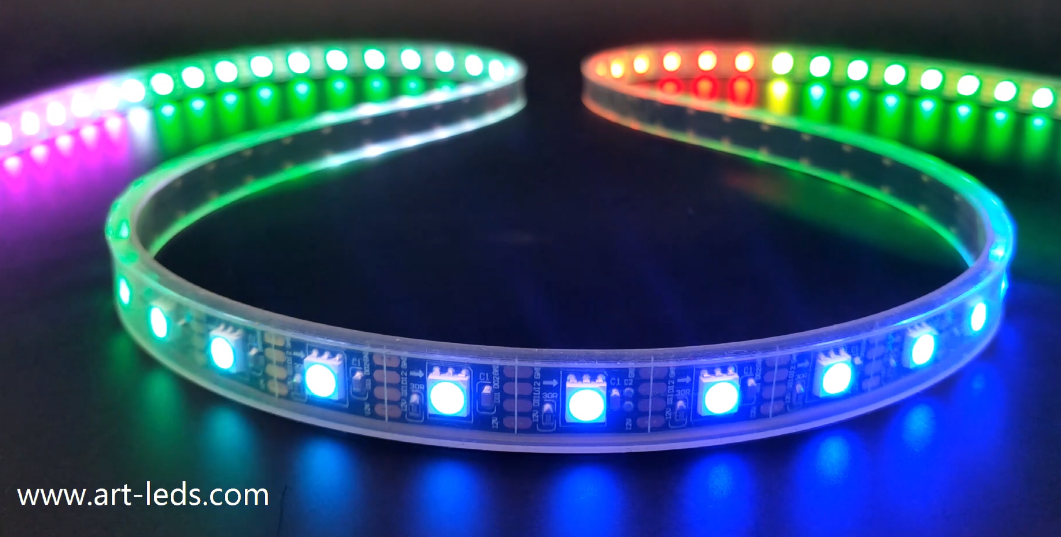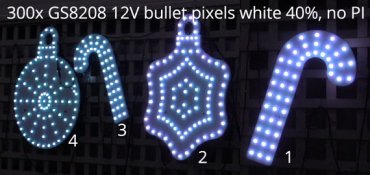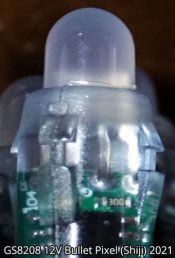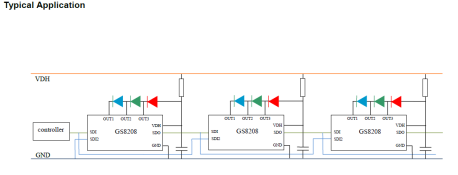after reading all the post and the excellent testing already done I devoured the datasheet as well, missing from most of the diagrams posted is the typical use circuit that includes a resistor from Vdd to R+, would appear to be voltage divider arrangement.one of the selling points of these seems to be being able to do longer runs without injection.. anyone tested the limits of that?
One of Ryans photos above seems to show a 300R resistor but it's hard to read.
The spec sheet gives a Vdd Min of 9v so this imposes a limit for the voltage drop along the string, this is offset by the current draw being less.
Putting some numbers into the Excel sheet for voltage drop calculations says that at 100 pixels we have 10.3v available, so maybe this will stretch the PI point out to 200 pixels.
I'm not prepared to spend the money on strings right now though for testing, seems the availability of bullet or square is limited and may remain that way without demand.
@ryanschristmaslights : any chance you can measure:-
Resistance of a 100 pixel length, no voltage, one end shorted.
The voltage at the start and end of a 100 count string, all white 100%
Please
and get a photo of the resistor?
What's it matter?, it's the same as 2811 already based on the datasheetanything with a faster Serial frequency on the way?
Cheers
Phil









